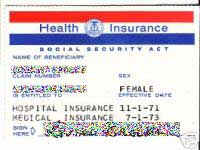 Again this year the Annual Enrollment Period (AEP) period for Medicare recipients with Part A and Part B runs from October 15th to December 7th.
Again this year the Annual Enrollment Period (AEP) period for Medicare recipients with Part A and Part B runs from October 15th to December 7th. Beyond this (AEP) there is a Special Election Period (SEP) for those receiving the Medicare Low Income Subsidy and for those with Special Needs or a chronic illness, usually diabetes.
The Special Election Period
This SEP specifically refers to the population which includes: the dual eligible, those with chronic illness, and those who are institutionalized. The dual eligible are those who qualify for both Medicare Part A and B and Medicaid. Those who have a chronic illness are those who a physician has certified as being treated for a qualified medical condition that is specifically designated in the plan. And those institutionalized refers to those who are confined to a long-term care facility.
The Medicare Supplement Plan Enrollment
Finally, if you're interested in a Medicare Supplement Plan you can enroll in it year around if you have Original Medicare A and B. If they accept Medicare, a Medicare Supplement Plan allows you to go to any doctor or hospital of your choosing . Also, you can change your Medicare Supplement Plan any time.
It certainly may be a good idea to have a qualified agent to evaluate your coverage to see if you can save some money on your policy.
Call (773) 614-3201 for help in choosing the best Plan for yourself.
Finally, if you're interested in a Medicare Supplement Plan you can enroll in it year around if you have Original Medicare A and B. If they accept Medicare, a Medicare Supplement Plan allows you to go to any doctor or hospital of your choosing . Also, you can change your Medicare Supplement Plan any time.
It certainly may be a good idea to have a qualified agent to evaluate your coverage to see if you can save some money on your policy.
Call (773) 614-3201 for help in choosing the best Plan for yourself.

